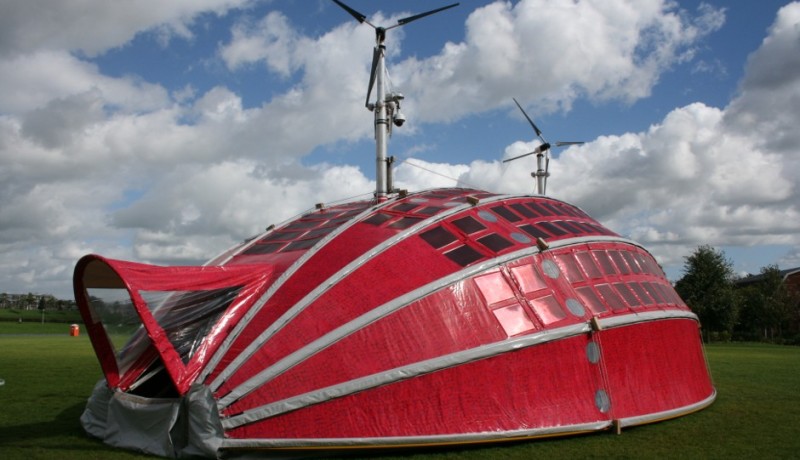Art Meets Science; The World In A Shell
October 10, 2010
on
on

A standard 20’ shipping container was transformed into an autonomous space that is used as a playground for interacting with people. It generates its own energy by two roof mounted wind turbines and many solar panel units. It’s built-in intelligence continually gathers and stores data on the Shell's components and environment and allows for remote monitoring and control of energy usage. The project can be followed live on World in a Shell where the data gets published for those who wish to follow the project's progress in real-time.
Sometime scientists call themselves artists because they create new innovations inspired by their environment or life itself. In this case the artist created a scientific art project which draws the attention from both worlds.
 The Shell will be used as platform to resist the disappearance of indigenous cultures and their vast libraries of knowledge. Several knowledge exchange and educational projects, 'meet your neighbour, 'remote hospitality', 'shell cinema', 'inform and act' and 'from local citizen to global human', will be streamed live via internet. These tools will involve a worldwide public and create a closely-connected audience wherever the Shell travels or exhibits.To facilitate these activities on remote locations for longer periods of time, the artwork and construction itself is not so much a work of architecture as it is a large walk-in sculpture.
The Shell will be used as platform to resist the disappearance of indigenous cultures and their vast libraries of knowledge. Several knowledge exchange and educational projects, 'meet your neighbour, 'remote hospitality', 'shell cinema', 'inform and act' and 'from local citizen to global human', will be streamed live via internet. These tools will involve a worldwide public and create a closely-connected audience wherever the Shell travels or exhibits.To facilitate these activities on remote locations for longer periods of time, the artwork and construction itself is not so much a work of architecture as it is a large walk-in sculpture.
The Shell is designed, developed and built at the Technical University in Delft by artist Hans Kalliwoda and his team of professors and engineers. Hans introduced a new way of thinking and working in Delft where science meets art. The whole staff was very charmed by his idea of living and working and his presence was truly appreciated.
Sometime scientists call themselves artists because they create new innovations inspired by their environment or life itself. In this case the artist created a scientific art project which draws the attention from both worlds.
 The Shell will be used as platform to resist the disappearance of indigenous cultures and their vast libraries of knowledge. Several knowledge exchange and educational projects, 'meet your neighbour, 'remote hospitality', 'shell cinema', 'inform and act' and 'from local citizen to global human', will be streamed live via internet. These tools will involve a worldwide public and create a closely-connected audience wherever the Shell travels or exhibits.To facilitate these activities on remote locations for longer periods of time, the artwork and construction itself is not so much a work of architecture as it is a large walk-in sculpture.
The Shell will be used as platform to resist the disappearance of indigenous cultures and their vast libraries of knowledge. Several knowledge exchange and educational projects, 'meet your neighbour, 'remote hospitality', 'shell cinema', 'inform and act' and 'from local citizen to global human', will be streamed live via internet. These tools will involve a worldwide public and create a closely-connected audience wherever the Shell travels or exhibits.To facilitate these activities on remote locations for longer periods of time, the artwork and construction itself is not so much a work of architecture as it is a large walk-in sculpture.The Shell is designed, developed and built at the Technical University in Delft by artist Hans Kalliwoda and his team of professors and engineers. Hans introduced a new way of thinking and working in Delft where science meets art. The whole staff was very charmed by his idea of living and working and his presence was truly appreciated.
"Good art gives inspirations, brilliant art brings about changes" - Hans Kalliwoda.
Read full article
Hide full article


Discussion (3 comments)